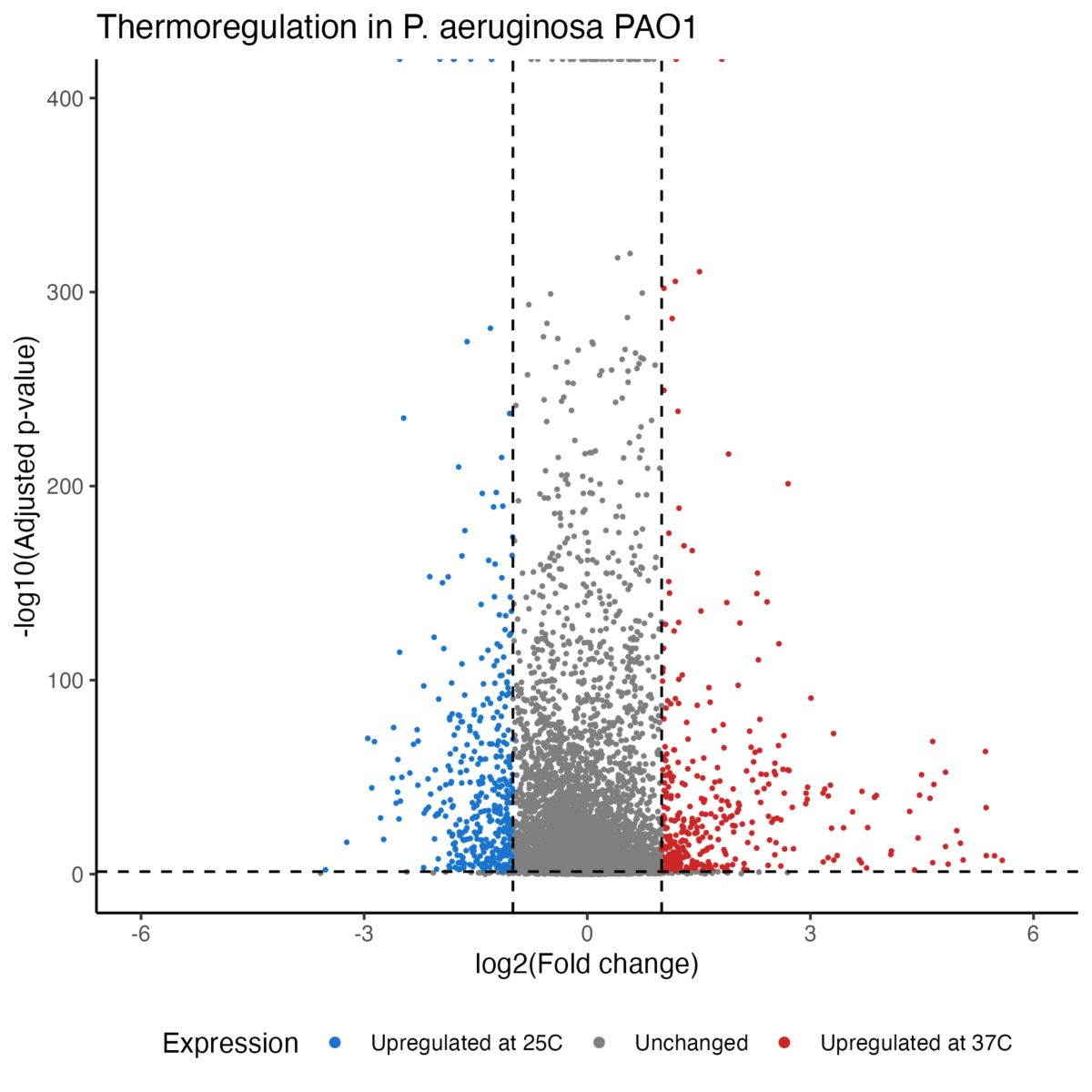
______
Temperature Regulation in P. aeruginosa
Opportunistic bacterial pathogens like P. aeruginosa sense temperature changes as they transition from the external environment, such as a hospital surface, to the human host (and vice versa!). Temperature can also vary between infections sites, such as the eye and blood. As P. aeruginosa can survive in a wide-range of temperatures, a better understanding of how temperature alters this bacterium’s gene expression and physiology will provide critical insights into how it establishes infections at many different body sites.
Rachel Done is interested in temperature regulation (also thermoregulation) of the important secreted protease PrpL (Pvds-regulated endoprotease, also protease iv/piv/PA4175). PrpL can degrade many important elements of the innate immune system, such as the iron sequestering molecules lactoferrin/transferrin, complement C3, and elastin. She has found that prpL is more highly expressed at lower temperatures (25°C) than human body temperature (37°C) and is currently researching the mechanistic basis for this unique thermoregulation of an important virulence factor.
Rachel is also using next-generation sequencing techniques such as RNA-seq and ChIP-seq to examine how gene expression and transcriptional regulators are affected by temperature changes at a global scale.